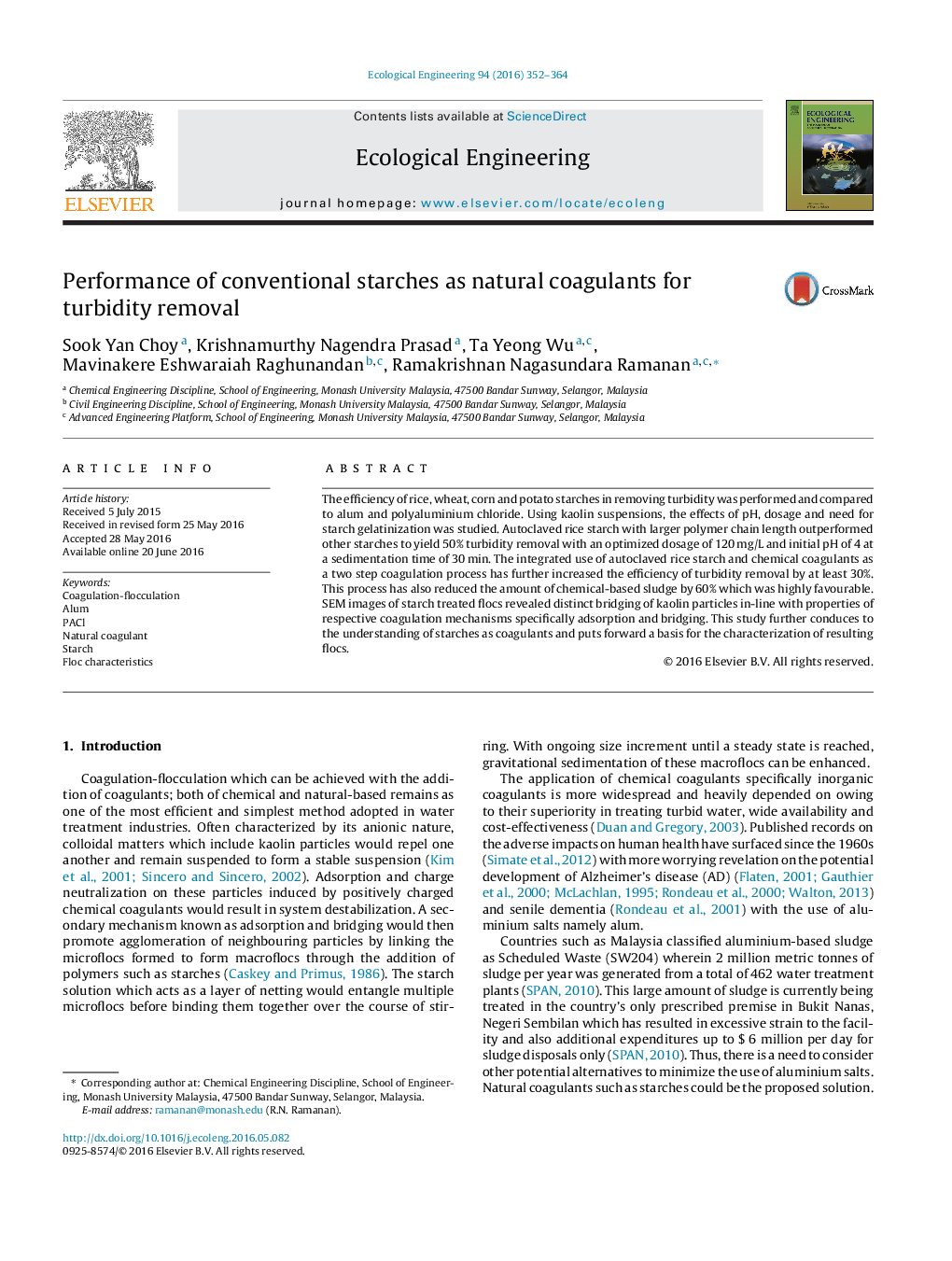| Article ID | Journal | Published Year | Pages | File Type |
|---|---|---|---|---|
| 4388563 | Ecological Engineering | 2016 | 13 Pages |
•Evaluation of using conventional tuber and cereal starches as natural coagulants.•Investigation on the importance of starch gelatinization and turbidity removal.•Determination of the effects of pH, dosage and various mode of coagulant addition.•Characterization of the resulting wet and dry flocs.•Identification of relevant coagulation mechanisms based on floc characteristics.
The efficiency of rice, wheat, corn and potato starches in removing turbidity was performed and compared to alum and polyaluminium chloride. Using kaolin suspensions, the effects of pH, dosage and need for starch gelatinization was studied. Autoclaved rice starch with larger polymer chain length outperformed other starches to yield 50% turbidity removal with an optimized dosage of 120 mg/L and initial pH of 4 at a sedimentation time of 30 min. The integrated use of autoclaved rice starch and chemical coagulants as a two step coagulation process has further increased the efficiency of turbidity removal by at least 30%. This process has also reduced the amount of chemical-based sludge by 60% which was highly favourable. SEM images of starch treated flocs revealed distinct bridging of kaolin particles in-line with properties of respective coagulation mechanisms specifically adsorption and bridging. This study further conduces to the understanding of starches as coagulants and puts forward a basis for the characterization of resulting flocs.
